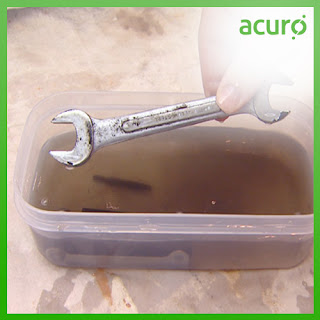Rust Cleaners - Fast Acting, Eco-friendly Rust Chemicals

Rusting, a type of corrosion, commonly found in machinery, occurs in iron and its alloys when they are exposed in moist air. After being exposed in moist air, reddish coating of oxide is formed on them, that causes multiple detrimental effects in the system. The rusting of iron is a chemical change because it is the reaction between two substances reacting together to create a new substance. Rusting is an irreversible procedure. We can remove rust from metal or any metal instrument however we can’t get back the mass quantity that has been changed over to rust. It is considered as best practice if we remove the existing rust earlier, then take necessary steps for its inhibition. It prevents the gradual loss of metal with time. Rusting and pitting corrosion of metals are seriously detrimental, that can create a major loss in productivity and stability of any functional system, also they cause degradation of steel and iron structures, such as bridges, automobiles etc. Rusting in el...

